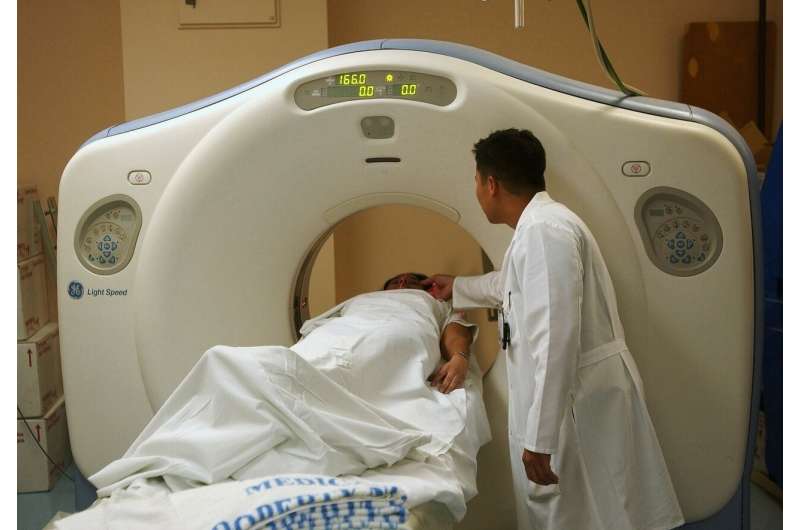The Potential Link Between CT Scans and Rising Cancer Cases: What Recent Research Reveals

Computed Tomography (CT) scans are an indispensable tool in modern medicine, widely available in hospitals and clinics worldwide. These imaging procedures enable healthcare professionals to quickly obtain detailed images of the body's internal structures, aiding diagnosis and treatment decisions across a range of conditions—from detecting cancers and strokes to identifying internal injuries. However, a recent study published in JAMA Internal Medicine raises concerns about the potential long-term health risks associated with the increasing use of CT scans.
The study estimates that in the United States alone, the number of CT scans performed in 2023 could result in over 100,000 additional cancer cases in the future, potentially accounting for around 5% of all new cancer diagnoses annually. This significant projection underscores the rise in CT scan utilization, which has increased by approximately 30% over the past decade. In 2023, about 93 million CT exams were conducted on roughly 62 million individuals.
While the risk from a single CT scan is low, it is not negligible—particularly for younger patients. Children and teenagers are more vulnerable due to their ongoing development and the longer time for radiation-induced damage to manifest. Exposure to ionizing radiation during early life can increase the likelihood of developing cancers such as leukemia, lung, colon, bladder, and breast cancers later in life.
Importantly, most CT scans are performed on adults, who also carry a significant cumulative risk. The most common types linked to future cancers involve scans of the abdomen and pelvis, with head CTs posing the greatest concern for infants under one year old. The new risk estimates are more than three times higher than those projected in 2009, partly due to advances in understanding how radiation exposure affects specific organs.
The findings compare the projected cancer cases from CT scans with other risk factors, suggesting that if current practices persist, the number of CT-related cancers could rival those caused by modifiable lifestyle factors like alcohol consumption and excess weight.
Despite these concerns, medical professionals emphasize that CT scans remain crucial for saving lives, enabling early diagnosis, appropriate treatment, and effective emergency responses. The challenge lies in optimizing their use—ensuring scans are ordered only when truly necessary.
Advancements in technology, such as photon-counting CT scanners, offer promise because they deliver lower radiation doses. Additionally, alternatives like MRI scans, which do not use ionizing radiation, are increasingly available. Implementing better diagnostic checklists can further help clinicians decide when imaging is essential and when safer options like ultrasound or MRI could suffice.
It is important to note that current research relies on risk models rather than direct evidence linking individual CT scans to cancer development. The American College of Radiology points out that no definitive study has yet established a direct causal relationship in humans. Nonetheless, the fundamental science of radiation-induced carcinogenesis is well-established.
In conclusion, while CT scans are invaluable diagnostic tools, awareness of their potential long-term risks should inform their use. Healthcare systems should focus on minimizing unnecessary scans, employing safer imaging options when suitable, and reducing radiation doses to continue benefiting from this technology without increasing future cancer risks.
Source: https://medicalxpress.com/news/2025-04-ct-scans-fueling-future-cancer.html
Stay Updated with Mia's Feed
Get the latest health & wellness insights delivered straight to your inbox.
Related Articles
Medicaid's Role in Expanding Access to Opioid Addiction Treatment, New Research Shows
Research reveals Medicaid's vital role in expanding access to opioid-use disorder treatments across U.S. states, highlighting the impact of policy decisions on overdose prevention and recovery.
Global Experts Collaborate to Update Diagnostic Criteria for Vascular Dementia
International experts have released updated diagnostic criteria for vascular dementia and cognitive impairment, incorporating recent scientific advances to improve diagnosis and early intervention strategies. Source: https://medicalxpress.com/news/2025-09-global-experts-redefine-diagnostic-criteria.html
The Impact of Elderly Couples' Drinking Patterns on Health Outcomes
A University of Michigan study reveals how drinking patterns among older couples influence long-term health, highlighting the importance of shared habits in aging populations.
Reduced Use of Rescue Breaths in Pediatric CPR During COVID-19 Associated with Increased Child Mortality
The decline in rescue breathing CPR during COVID-19 has been linked to increased child mortality, highlighting the importance of proper pediatric resuscitation training and safety tools.



